
Dell announced an aggressive global target of $62B in revenue by 2006, which meant the firm would need to make talent acquisition and development a global priority. At the same time, Dell wanted to continue to focus on cost effectiveness and operational efficiency.
The company’s cornerstone values and philosophy are expressed as five elements, which together comprise “The Soul of Dell”:
The company was at a point where it was asking its managers and leaders to lead differently than they ever have before. While reaching the aggressive numbers was essential, it was not enough. Instead, leaders were being called on to get to the numbers while engaging their people by offering inspiration and extraordinary leadership, integrating The Soul of Dell into their leadership styles. This called for a unique development program, linked to specific identified competencies.
Strategic Leadership@Dell was conceived as an integral part—a “core building block”—of Dell’s overall EMEA high-potential (hi-po) program. It is a targeted program for a highly targeted population, which is seamlessly integrated with Dell’s leadership competency framework. The overall hi-po program incorporates personal insight, organizational support, and on-the-job experience—and Strategic Leadership@Dell is a central component.
Kathleen Woodhouse, Senior Manager, Learning and Development, Dell EMEA, realized the hi-po program “could not focus on everything.” She had to make tough choices about the most relevant, critical competencies to be included. Because Dell believes that at the heart of a successful leadership team is the individual leader, self-awareness was an important competency. She selected Interaction Associates as a partner to create a learning process to support the competency development.
Her choices were bold in light of past initiatives and traditional wisdom. She was asking busy high-potentials, all of whom are in senior leadership roles, to leave their locations to participate in the learning session. In addition, sharing 360-degree assessments with real-time peer-to-peer feedback was a revolutionary concept at Dell at the time. As Kathleen put it, “we were setting new expectations.”
At the same time, Kathleen minimized risk in several ways. She chose a partner with considerable experience and reputation. She also ensured complete integration with Dell leadership competencies and strategic imperatives. She had strong support from top executives and executive participation in the development process. And she made sure the program was data-driven, represented high levels of cultural alignment, and was relevant for high-potentials at many levels.

During the four-day learning event, Dell EMEA high potentials participate real-time in a computer-based business simulation designed specifically to reinforce the identified competencies. They work in teams, across boundaries within and among organizational units. They are peer-coached in areas identified in their 360-degree assessments as areas for improved performance, thereby enhancing their capacity for self-awareness and self-correction. Participants use the simulation to experience, practice, refine, and revisit leadership concepts, models, and frameworks. They operate in a work group to develop a collaborative approach to win potential customer business—while satisfying demanding shareholders, employees, and business requirements.
The competencies on which hi-pos focus during Strategic Leadership@Dell are:
According to Michael Reidy, Senior Consultant, Interaction Associates, one highlight of the program is the content around Strategic Thinking. Participants learn strategic thinking skills and practice using them to make decisions during team meetings. Those decisions are then tested by the computer-based business simulation. That way, participants receive real-time feedback on application of these new skills.
Sharing 360-degree assessments with real-time peer-to-peer feedback was a revolutionary concept at Dell at the time.
Kathleen reviewed the results of the program to date, measuring participants in a number of ways. The results indicate the program is developing leaders, quickly, in the areas Dell needs to reach its goals:
The majority have been rated #1 or #2 performers (the top two levels of a five-tier rating system).
Participants have enjoyed above-average bonus modifiers and stock modifiers.
There have been measurable increases in Winning Culture metrics from the “Tell Dell” employee opinion survey.
Kathleen reported the following points as “Lessons Learned” for those who are planning a hi-po program launch:
Additional Key Results include: